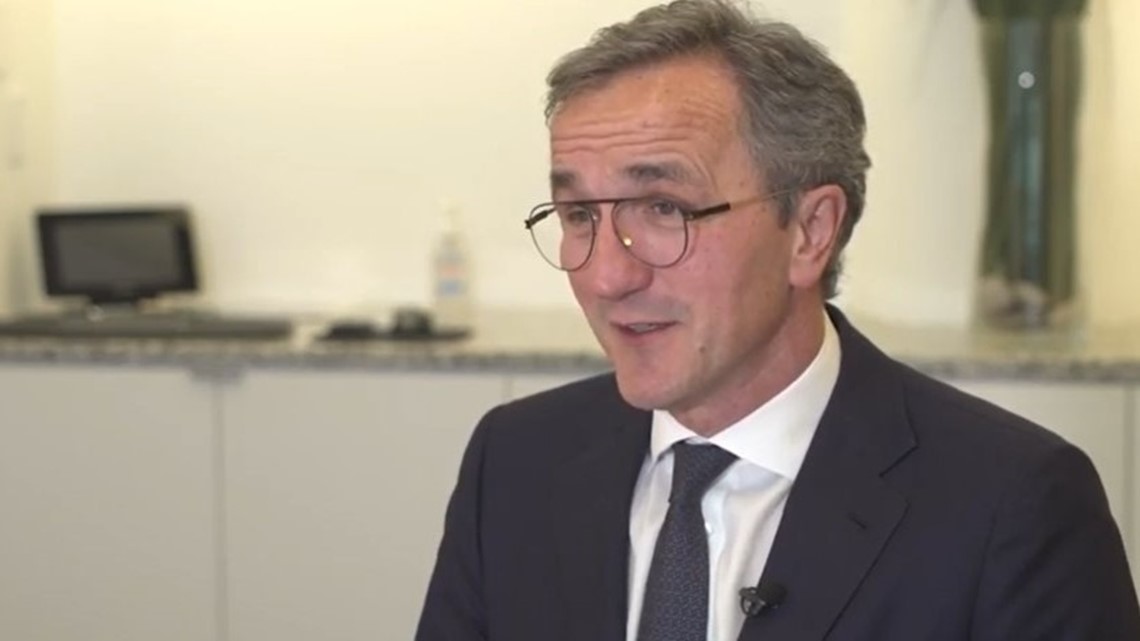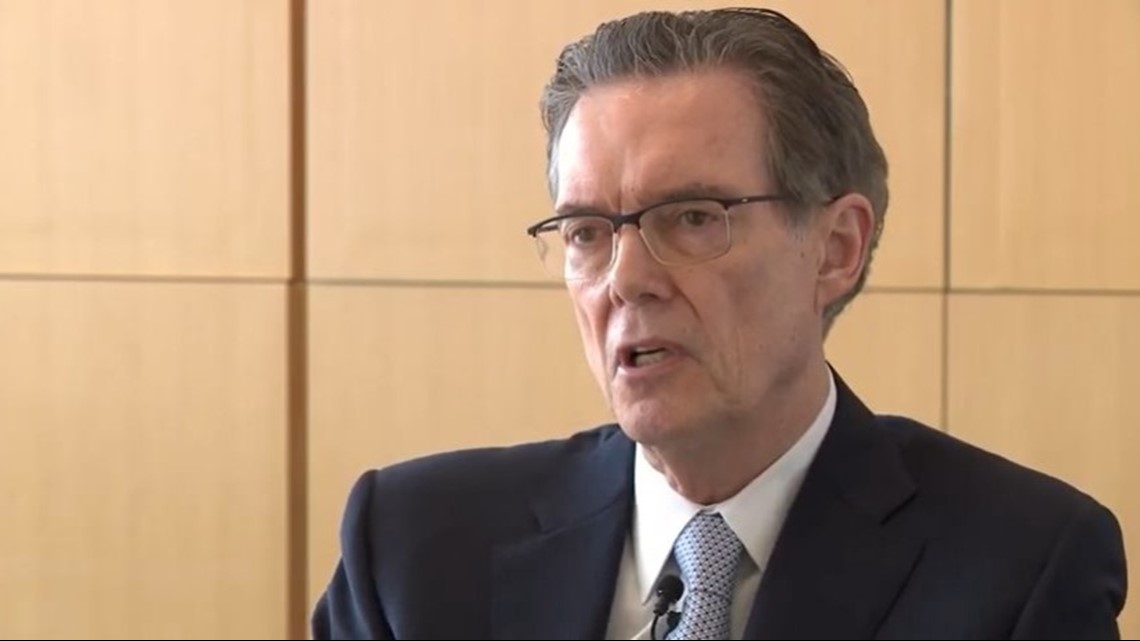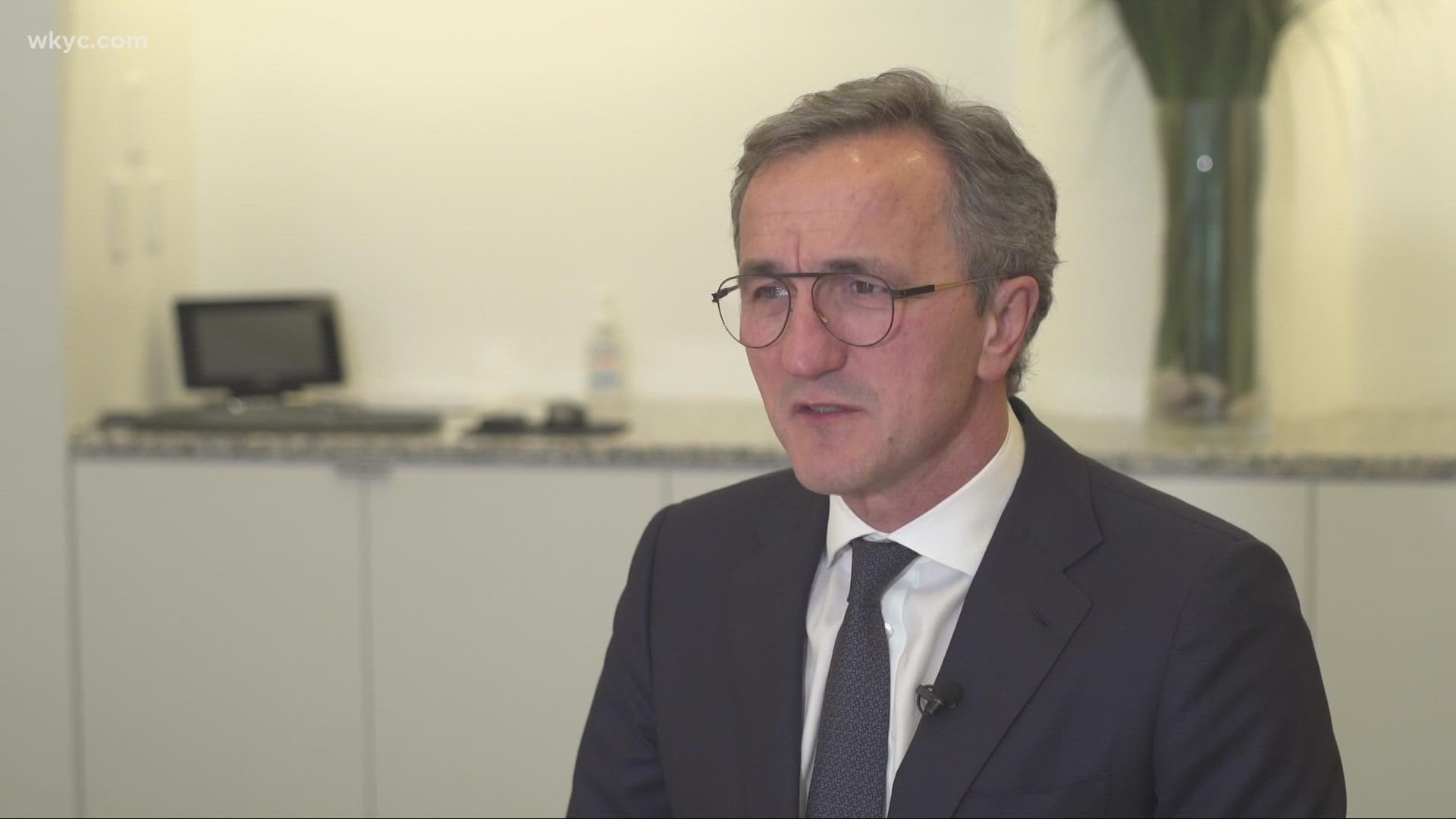CLEVELAND — In the last two years, more than 2 million Ohioans have been infected with COVID-19. Over 37,000 have died.
Here in Northeast Ohio, Cleveland Clinic helped lead the nationwide response to the pandemic.
3News’ Isabel Lawrence sat down with the Clinic’s CEO and chief medical officer to look back and reflect on two of the most difficult years in recent history. We also look ahead to the future, asking where we go from here.
Cleveland Clinic CEO Dr. Tom Mihaljevic calls the Covid pandemic "the greatest challenge through our professional lifetime." Looking back on those early days, he says, it was difficult to see where early reports of a new virus would lead.
"We were concerned about this new and emerging disease. We really didn't know how severe it is," he recalled. "What is the potential of this to develop further?"


In January 2020, upon hearing early reports of a new coronavirus, the Clinic began activating its Incident Command Group, thinking about numbers of potential patients, beds, and caregivers.
But despite the preparation, Mihaljevic identified what he called three crises over the course of the pandemic.
CRISIS 1: PPE
The Clinic’s Chief Medical Officer Dr. Bob Wyllie was placed in charge of the system’s pandemic response. He also became Zone Leader for Northern Ohio - Zone 1 of what became Ohio's three hospital zones. Wyllie says at the time, much of the existing Personal Protective Equipment, or PPE, was made in China. Nasal swabs were made in Italy - both were countries hit early and hard by the virus.
This led to a shortage in supplies.
"How much do we outsource PPE to other countries?" Wyllie recalled. "How much needs to be internally produced in the United States to make sure that we have enough adequate supplies and redundancy in the system?"
CRISIS 2: VACCINE HESITANCY
But for all of the tragedy, there were triumphs. One success story of the pandemic was the development of mRNA vaccines to fight Covid.
A powerful tool, with the potential to end the spread. But only if used. Mihaljevic remembers the frustration felt by healthcare providers who were met with unexpected resistance to the newly available vaccine.
"There was a big disappointment by the fact that very many people did not want to take a vaccines that are both safe and effective," he said.
Reflecting now, Wyllie sees ways vaccine messaging can improve in the future.
"Ideally we would start even earlier to talk about vaccines, their safety and the possible problems associated with them. Why you should get a vaccine," he said. "We need to be out in front in terms of the public messaging for this moving forward."
Currently, only 57% of Ohioans are fully vaccinated.
As our healthcare systems and providers tried to raise vaccination rates, yet another hurdle.
CRISIS 3: VARIANTS
"I wish we knew about the serial viruses coming out," Wyllie said. "The quote, the variants of concern. It's not just the alpha variant which hit us. It was Delta and then Omicron."
As the variants spread, the sheer numbers of positive cases became difficult to comprehend. Over the last two years, the Clinic has treated about 30,000 Covid patients in their hospitals, with the worst surge this winter.
"We had 1,200 patients within the Cleveland Clinic hospitals in Northeast Ohio," Wyllie said. "At the same time, we had over 3,000 caregivers out because they had COVID or were exposed to COVID and they couldn't come back to work at the time. So that's a tough combination to manage at once."
Of those 1,200 patients, 20-25% were treated in the ICU.
But through such devastation and loss, came innovation. Progress out of necessity, and tools these doctors say we can use in the future.
"Few people know that mRNA vaccines, were actually in development for quite some time. And they have been in development to treat different forms of cancers," Mihaljevic said. "So we are very fortunate to translate the knowledge that we applied for certain category of diseases into the knowledge that we could then apply for the more effective treatment of the pandemic."
With these tools and learnings, these leaders believe we’re in a better position, if there is a next time.
WHAT’S NEXT
And the doctors say there could be continuing concern. Dr. Wyllie warns of future possible variants, potentially in summer or fall.


No matter what lies ahead, both doctors want one thing to stay the same – teamwork between health systems throughout Northeast Ohio and the country.
“I think one of the most amazing things is that I've seen is the cooperation between the state and the local healthcare systems and how we can come together to provide care, uh, between systems," Wyllie said.
Banding together against a virus that forever changed all of our lives.
“I believe that that collaboration is not gonna be just beneficial at a time of crisis caused by pandemic," Mihaljevic said. "But I think that we can do a lot of good through collaboration on other public healthcare issues that are equally important."
Additional Reporting:
- Omicron surge waning as world marks 2 years of COVID
- 2 years later: A look back on the anniversary of Ohio's first confirmed cases of COVID-19
- 'Ohio's future is very bright': Gov. Mike DeWine reflects on pandemic two years after state's first COVID-19 cases
- 'We're entering a new phase': Ohio reducing daily COVID reports to one day per week

